Infinity room exhibit opens at Las Vegas Strip gallery
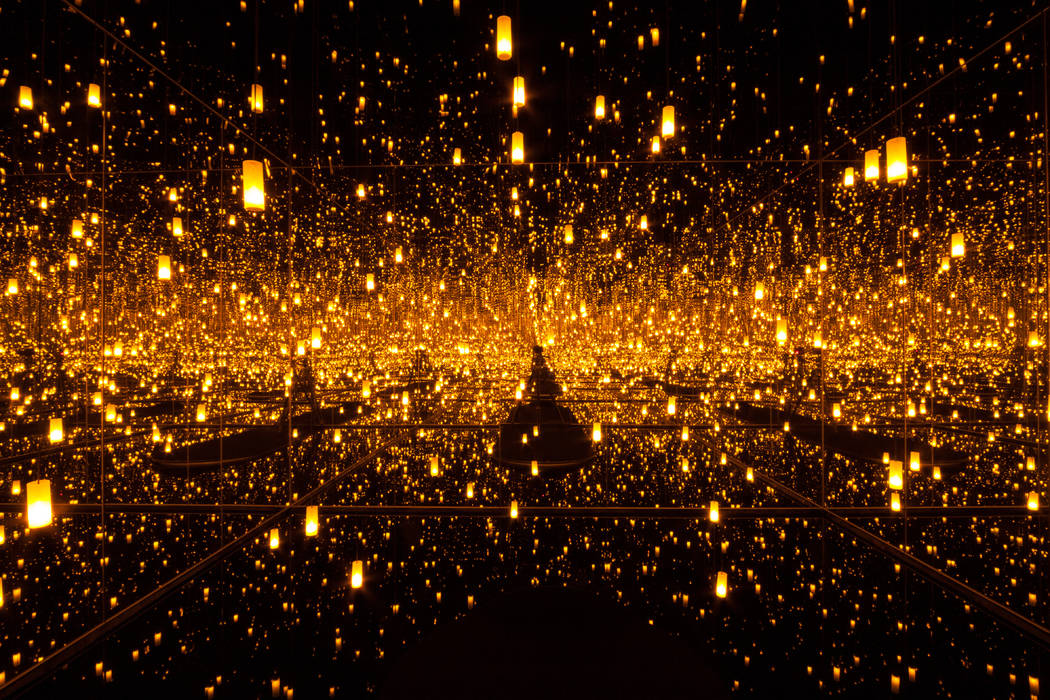
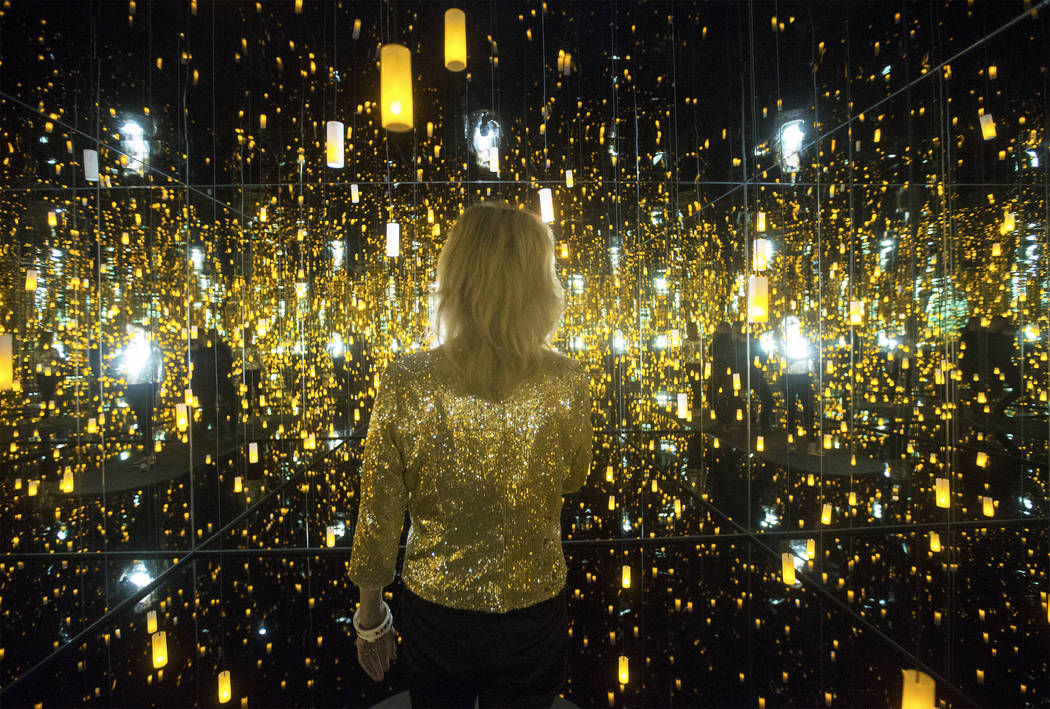
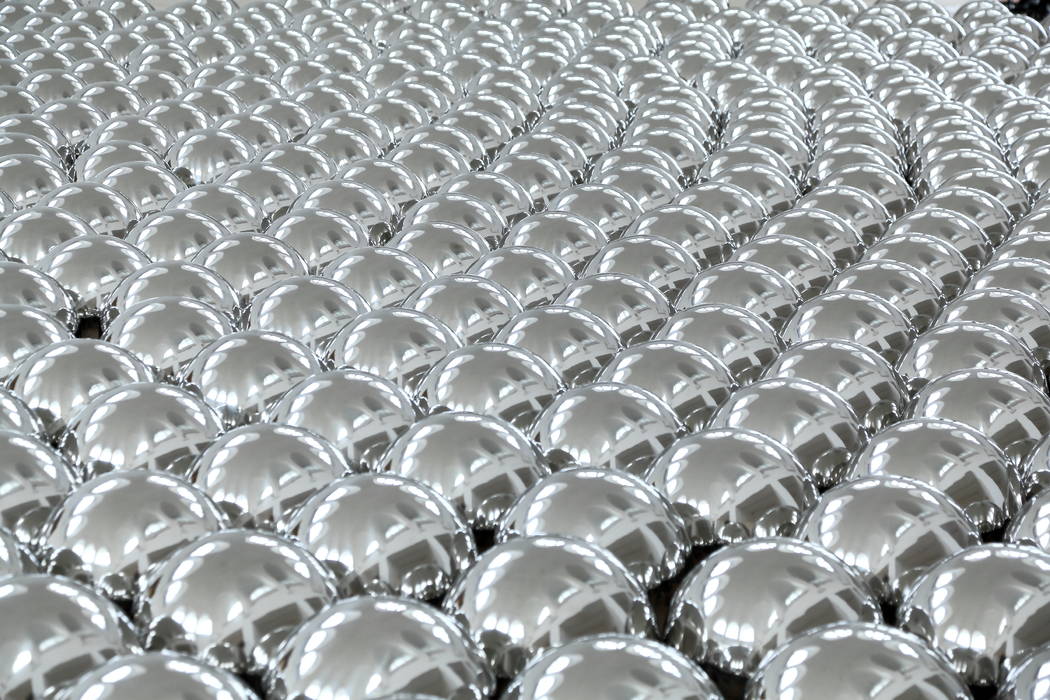

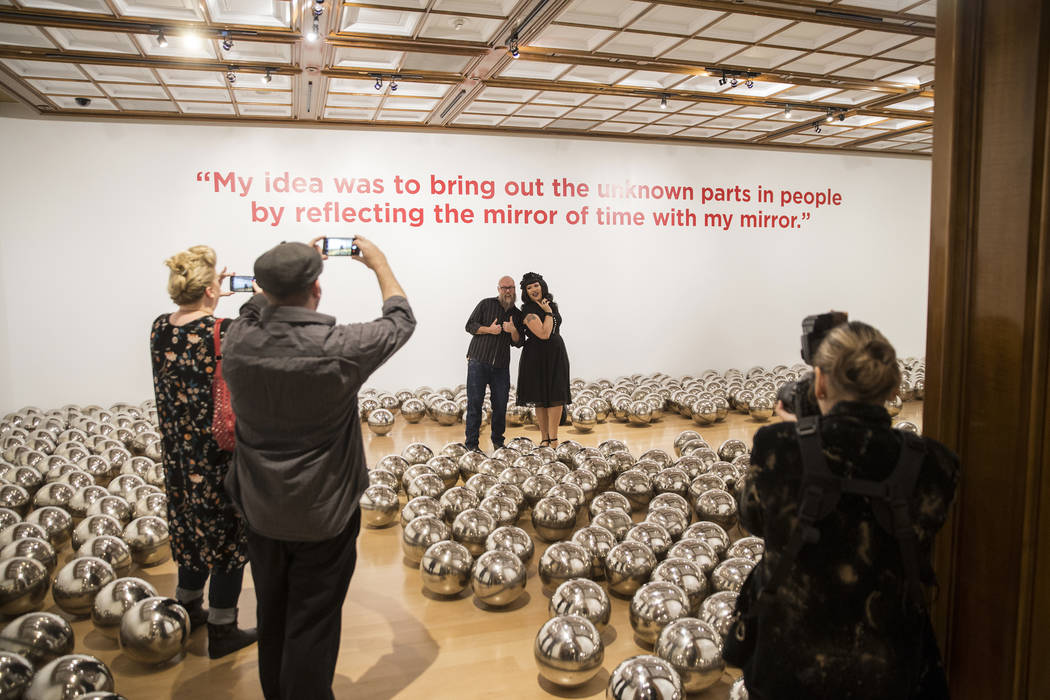
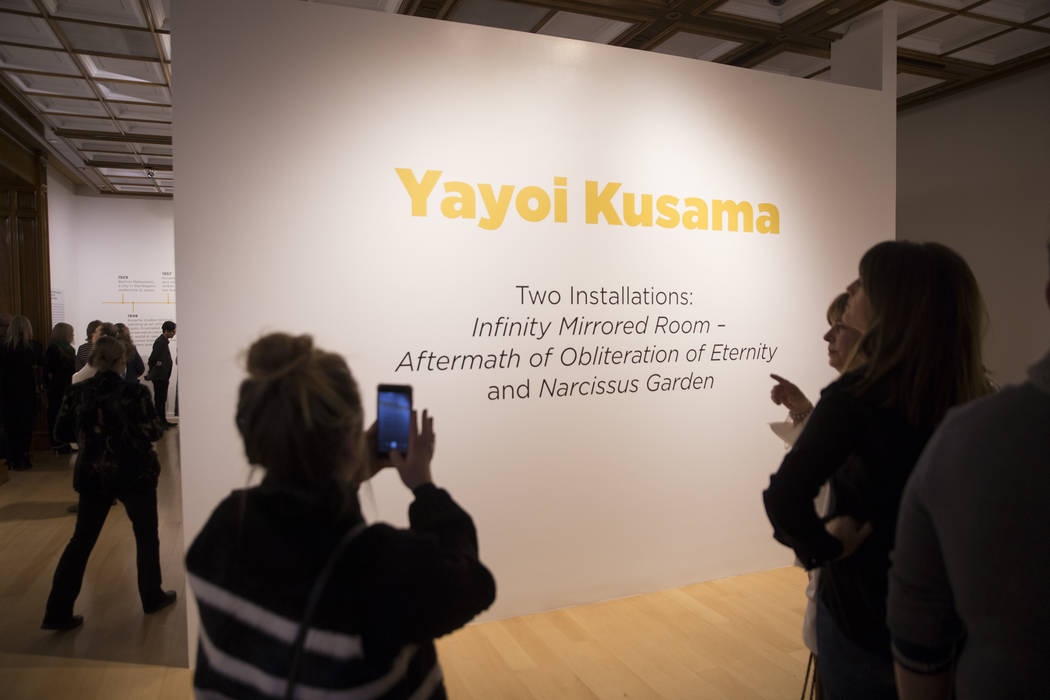
In a white room with white walls stands a white cube. Open the white door and step inside. The cube is silent and dark — save for suspended yellow lanterns by the dozens. Or the hundreds. Maybe the thousands. They may as well stretch on for infinity. Step forward and the lanterns brighten and dim in all directions. At the outset of the infinity, you realize that what you’re staring at is yourself. Forty-five seconds later, someone opens the door and the spell breaks. Did you remember to take a selfie?
Japanese artist Yayoi Kusama has garnered international acclaim for her immersive infinity mirrored rooms. For the first time, one of them is open in Las Vegas.
“Aftermath of Obliteration of Eternity” is one of two Kusama installations on exhibit beginning Saturday at the Bellagio Gallery of Fine Art. The latest to open in a series of Japanese exhibits at the gallery, Kusama’s vibrant motifs of lights and polka dots invite visitors to step inside, walk through and take photographs.
Kusama’s inspiration draws from a difficult childhood, according to “Love Forever: Yayoi Kusama 1958-1968,” published in conjunction with The Museum of Modern Art’s exhibit of the same name. At age 6, she began experiencing traumatic hallucinations of being consumed by dots and nets. At age 10, she started to channel those visions into paint. Though her mother tried earnestly to stifle her daughter’s interest in art, she moved to New York in 1958, where she created her first infinity mirrored room, “Phalli’s Field.”
“Aftermath of Obliteration of Eternity,” created in 2009, is a 13.5-foot cube, plated with mirrors on all sides. A narrow catwalk extends towards the center, allowing visitors to move through the lights into the center of the cube.
The reflections have various effects. Some people watch as their own reflection fades into the darkness. Others are confronted with reflections of themselves at all sorts of unflattering angles. Ideas of repetition, reflection and infinity are ones that Kusama intends to capture.
“She was one of those groundbreaking artists,” says Tarissa Tiberti, executive director of art and culture for Bellagio. “But because she was female and Japanese, she didn’t get the recognition that male artists achieved in New York in the 1950s.”
After decades of quelling her hallucinations with what Kusama calls “obsessional art,” the 89-year-old has spent the past four decades living voluntarily in a psychiatric hospital. In that time, the “selfie culture” has transformed the way visitors experience art museums.
“That’s all the art world is talking about,” Tiberti says. “Museums, galleries and artists all over the world are talking about this new wave. The way people are wayfinding through art museums, how people are wanting these interactive, photographic experiences.”
As images of Kusama’s sculptures and structures have hit social media, they’ve made sizeable impacts on the spaces they inhabit. During its 11-week run at the Hirshhorn in Washington, D.C, the museum’s membership climbed from 150 to more than 10,000 people. The Broad in Los Angeles sold out of 50,000 tickets to its ten-week exhibit in under an hour, according to the Los Angeles Times.
The Bellagio gallery is prepared in the event that Las Vegas visitors are as zealous. Just 75 tickets will be available per hour. A ticket includes one entry into the mirror infinity room, limited to one or two people for no more than 45 seconds.
The second installation included with each ticket is “Narcissus Garden,” in which 750 metallic spheres form a lake on the gallery floor. A winding path invites visitors to stroll through the space and consider the distorted reflections staring back at them.
“As a long fan of her work, I’ve wanted to get it into the gallery for years,” Tiberti says. “As human beings, we can’t really wrap our heads around the idea of infinity. This is an incredible way to think about it.”
Contact Janna Karel at jkarel@reviewjournal.com. Follow @jannainprogress on Twitter.













